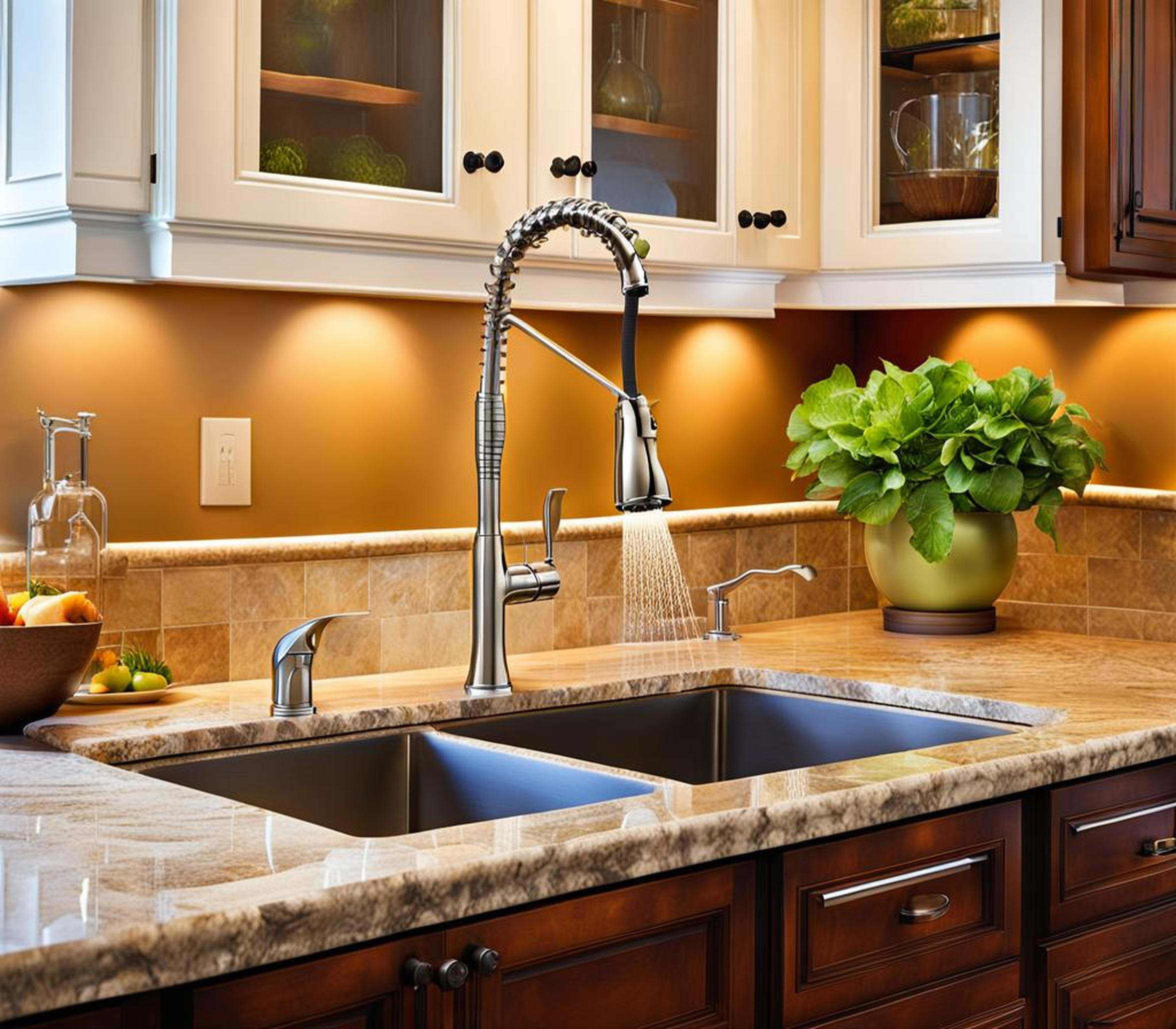Is your kitchen faucet looking a bit outdated and worse for wear? Replacing an old, leaky kitchen faucet with a new one can instantly improve both the look and function of your kitchen.
A new faucet can entirely transform the feel of your kitchen. But when is it time to replace an old kitchen faucet? And what should you consider when selecting a new one? We’ll cover when to replace a faucet, choosing the perfect new fixture, steps for removal and installation, troubleshooting issues, and how a faucet replacement can revitalize your kitchen’s style.
When Is It Time to Replace Your Kitchen Faucet?
Kitchen faucets endure a lot of wear and tear. The experts recommend replacing your faucet every 10-15 years. Here are some signs that indicate it’s time for a new one:
- Frequent leaks or dripping
- Low water flow or pressure
- Rust buildup or mineral deposits
- Stuck or loose handles
- Outdated or unappealing style
Even small leaks can waste hundreds of gallons over time. And an old faucet with limescale not only looks bad but makes it harder to clean dishes or fill pots. If any of these issues sound familiar, your kitchen is likely due for a faucet facelift.
Choosing the Perfect New Faucet
With so many options available, selecting a new kitchen faucet may seem daunting at first. Here are the key factors to consider:
Types of Faucet Mounts
Single-handle, double-handle, and hands-free faucets each have advantages:
- Single-handle: Convenient temperature/flow control
- Double-handle: Precise hot & cold water control
- Hands-free: Touchless activation, ideal for busy cooks
Important Features
| Finish/color | Match your decor, consider matte, brushed, or polished |
| Spout height & reach | Accommodate your sink size and tasks |
| Sprayer | Pull-down, side, or none |
| Holes required | Look at your existing sink holes |
Also, consider flow rate and compatibility with your water pressure and plumbing.

Cost Considerations
Expect to spend $100-$500+ for a new kitchen faucet. Hands-free and commercial-style faucets sit at the higher end. But a basic single-handle faucet starts around $100. Shop sales and clearances for the best deals.
Preparing the Sink and Removing the Old Faucet
Once you’ve selected a new faucet, it’s time to remove the old one. Carefully preparing the sink area prevents damage. Have these supplies on hand:
- Basin wrench
- Adjustable wrenches
- Plumber’s putty
- Flashlight
Then follow these steps:
- Shut off the water supply – Locate the shut-off valves underneath or behind the sink and turn them off.
- Disconnect and detach any sprayer, supply lines and drain components. Have a basin ready to catch water still in lines.
- Remove old putty or caulk with a putty knife so the faucet is loose.
- Use a basin wrench to loosen and remove the nuts holding the faucet from above.
- Clean away any putty or gunk around the sink holes once the old faucet is out.
Installing the New Kitchen Faucet
It’s finally time to install your shiny new faucet! Follow the manufacturer’s instructions carefully. The main steps are:
- Apply fresh plumber’s putty or gasket around the sink holes.
- Lower the new faucet into place from above the counter and hand tighten the nuts.
- Further tighten with wrenches, taking care not to crack the sink.
- Reconnect supply lines and drain components.
- Make any needed adjustments to ensure proper alignment.
Take it slowly to avoid leaks or other issues. Be sure to tighten all connections securely but not excessively.
Making the Final Water Supply Connections
Connecting the faucet to your water supply lines requires precision. Here are some tips:
- Use the flexible supply tubes provided with most new faucets.
- Wrap all threaded connections with Teflon tape.
- Hand tighten connections before using a wrench for a final turn.
- Do not overtighten, as this can crack tube nuts.
Go slowly and double check your work – this is where leaks often occur if connections are loose.
Finish the Job by Turning on Water and Testing
You’re almost there! To complete the installation:
- Turn water supply back on via shut-off valves.
- Check below and around the new faucet for any drips or leaks.
- Turn faucet handles to full hot and full cold for a minute to clear any debris.
- Test sprayer and stream functions.
- Let water run for a few minutes to flush out sediment.
Closely examine connections for signs of leakage and tighten as needed with wrenches. Confirm water pressure and flow is adequate before regular use.
Troubleshooting Common Problems
Even with proper installation, issues can arise. Here are solutions for some common faucet problems:
- Drips/leaks: Tighten nuts; check washers/gaskets; ensure plastic tubes are not cracked.
- Low water flow: Remove/clean aerator; check for kinks in supply lines.
- Loose faucet: Tighten mounting nuts from below sink.
- Handles stick/spin: Lubricate with silicone grease or replace worn cartridge unit.
- Sprayer not working: Check and reconnect sprayer hoses.
For stubborn issues, don’t hesitate to call in a professional plumber for assistance.
Once properly installed, your new faucet can completely change the look and functionality of your kitchen sink area. Keep it looking its best with occasional cleaning and by avoiding harsh abrasives.
Replacing an outdated or defective faucet improves appearance, reduces leaks and water waste, and makes kitchen tasks like washing dishes easier. With some planning and elbow grease, it’s a project any DIY-er can tackle to restore their most-used kitchen fixture.
We hope this guide gives you the confidence to upgrade your kitchen with a faucet replacement. Just take it step-by-step. Before you know it, you’ll have a revitalized kitchen sink space you can’t wait to show off!
